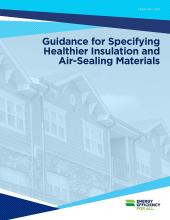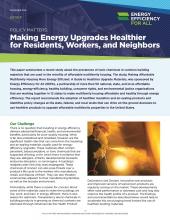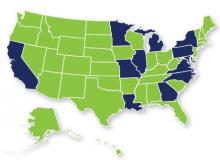Huge numbers of Californians struggle and sacrifice to afford energy bills - a fact most Californians understand and would even pay more to rectify, a new poll commissioned by Energy Efficiency for All shows.
The report from the American Council for an Energy-Efficient Economy (ACEEE) and EEFA analyzes data from the U.S. Census Bureau’s 2011 and 2013 American Housing Survey to determine energy burden values for 48 of the largest U.S. Cities. On average, low-income households pay 7.2 percent of household income on utilities—more than twice as much as the median household and three times as much as higher income households.
If low-income housing stock were brought up to the efficiency level of the average U.S. home, this would eliminate 35 percent of the average low-income energy burden of low-income households. The second half of the report focuses on strategies for alleviating high energy burdens including policies and programs to increase the impact of energy efficiency initiatives in these communities.
| Attachment | Size |
|---|---|
| 1.35 MB |









